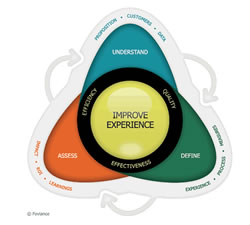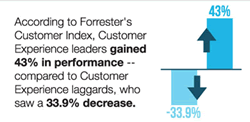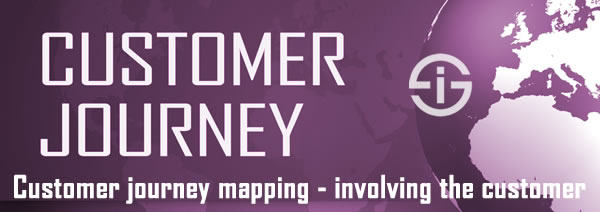The attention for customer experience (also known as CX) has grown exponentially over recent years – and it keeps doing so with customer experience now being recognized as an essential focus to create business and customer value.
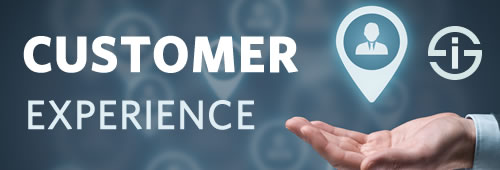
Yet, at the same time, customer experience has become a “thing,” a term many people use for various reasons. A guide to customer experience and customer experience management.
People are at the center of all business success. It sounds obvious, but in times of digital transformation, one can easily forget it. We’re more than our demographic, behavioral and other data – and while data have become increasingly important for customer experience optimization, it’s important to look beyond the dashboards as well.
The customer isn’t king anymore; the customer is dictator (Gerry McGovern)
The expectations of people have also changed. The ubiquity of digital platforms in their – our – lives is one of many factors impacting shifts in behavior and demands. We even started speaking about a digital customer experience.
- The end-to-end customer experience
- Customer experience management: value is in the eyes of the beholder
- The customer experience gap: enabling better customer experiences
- Why and how customer experience matters (more)
- Customer experience, ownership and leadership
- Customer experience and customer journey mapping
- Optimizing the customer experience: the holistic and integrated must
- Customer experience transformation: getting started
However, all in all, the essence of CX and customer experience management hasn’t changed all too much because, in the end, customer experience – the experience part – is all about emotions. So, let’s take a look at that essence. And why customer experience keeps becoming more important and so many organizations still struggle to meet those expectations.
The definition of customer experience hasn’t changed a lot either. In a nutshell, it’s still seen as both individual and holistic (cumulative, over a longer period) perceptions and feelings customers have when interacting with any component of your brand and service of your company: support, products, people (employees), applications, marketing, systems and more.
In a sense, everyone is a customer: customers as buyers, employees, suppliers and other stakeholders.
Whether it’s in their capacity as consumers, citizens, hotel guests, or workers, people and the ways you serve and empower them are key to future business growth. All parts of your organization and ecosystem need to be connected and aligned with the optimization of customer experience(s) as the drivers of revenue and enablers of value for people you interact with.
Leading brands in CX start with a strong foundation in customer satisfaction. Getting this right and understanding how to build upon it to drive positive financial and business outcomes is what sets the best brands apart from the rest (Augie Ray, Gartner)
Depending on the type of relationship between organizations and people and how the latter are called in that relationship, customer experience can also be referred to with terms such as employee experience, guest experience, or patient experience, to name a few. Obviously, these relationships partially overlap, but they also differ and thus, the perceptions and factors influencing them as well as the ways to measure them will be different.
The exploding attention for customer experience, as such, is great. It – theoretically – shows that organizations are starting to put their customers more at the center: customer-centricity.
Not in the original sense of focusing on your best customers but in the sense of optimizing your processes and business functions around the customer. And not just in an all too theoretical and strategic way but in practice, in real life, in service and beyond.
The end-to-end customer experience
The definition of a customer has changed. Or at least: we would like you to think differently about the customer. In a connected business reality, everyone in the ecosystem of your business is a customer: from employees and investors to partners, buyers and their networks, including the various players in the value chain from manufacturer to end consumer and back. In other words: all stakeholders.
Customer experience is crucial for the present and future of your business. It always has been but in an era of a more autonomous and ’empowered’ customer who has higher expectations it is even more so.
In their 2005 book, Return on Customer, Don Peppers and Martha Rogers presented customer experience as the single most important factor for business success. We can’t ignore it anymore – we see it each day.
In that famous connected – and increasingly digital – age we live in, the determining factors shaping the experiences we have with businesses are multiplying. We used to only look at face-to-face contacts, interactions across several channels, customer service, products and solutions, the brand as such and other attributes, all close to the business, as being crucial elements of the customer experience – as the sum of all experiences.
In reality, the end-to-end customer experience is defined by much more than that. In fact, the customer experience is shaped by numerous factors that escape the “control” of a business. Think about word-of-mouth, to name just one. At the same time customers don’t always want an experience in the ‘wow’ sense we often give it. Sometimes they just want to come in your shop, get their product, pay and get out asap. They want ease over delight.
The key reason why the customer experience is and will never be ‘in control’ is because customers are individuals and the core element in the customer experience equation is highly emotional, personal, contextual and diverse.
Customer experience management: value is in the eyes of the beholder
So, the term “customer experience management” (CEM) –literally managing customer experiences – might seem somewhat of a weird term at first sight and maybe even out of touch with a changing reality.
Sure, you can manage many elements that create the conditions for fantastic customer experiences: the quality of your customer service, the response speed of your contact center representatives, the content you create, the quality of the various inbound and outbound interactions (not in a marketing context but a general context of inbound and outbound communications), the brand narrative, the touchpoints where different interactions occur, the overall “ambience” of physical experiences, deep insight into what customers want, the list goes on and will grow.
However, you cannot really “manage” the customer experience as such. And the reason is simply: customers shape their own experiences.
A matter of emotions and (inter)action: customer experience and customer engagement
Individual customers – and people – are individual. In other words: they are all different. As customer experience is really “owned” by the customer (as a highly emotional given), vendors of CEM solutions, marketers and many others have started talking about customer engagement whereby there is (inter)action instead of customer experience (both are not the same).
This complexity, along with the lack of understanding what customer-centricity really means and the fact that in reality it often remains a promise (let alone, siloed effort), has been creating the famous customer experience gap. Of course, customer experience management is about more than what we just mentioned here, we used the ‘management’ part of it to make a point – strictly speaking customer experience management is about “design” for the kind of experiences you (no, wrong: your customers) value and want, from the most obvious low hanging fruit to the more sophisticated parts of the puzzle and always emotional.
Even if customer experience is about emotions and individual parameters, there are many commonalities in the ways people experience things, fulfil a task and value experiences.
Customer experience management and the outside-in view
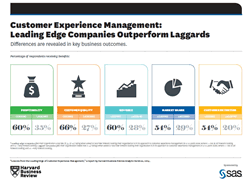
Customer experience management or CEM is not about managing customer experiences as such but a practice that includes the design of customer interactions – and touchpoints – aiming to meet customer expectations and ideally exceed them (when it makes sense), whereby the end-to-end customer experience is taken into account and the mutual value of customer interactions is optimized in a continuous loop of interaction, reaction, pro-action and optimizing satisfaction to go beyond “good enough”. It has to be what it has to be.
Given the many dimensions and elements in the overall customer experience it does require management, transformation and process optimization, involving the customer on various levels, making intensive use of actionable data and information and removing obstacles and silo effects, taking into account – and involving – the customer and increasingly deploying connected technologies. Mind you: it’s not just about data and technology, most certainly not. It’s still about good old but hard to achieve “putting yourself in the shoes of”, “having an outside-in view” and getting out there as customers are more than data and digital feedback, they also walk around and can speak. And remember: emotions!
The customer experience gap: enabling better customer experiences
Our inability to approach customers as individuals and lack of understanding what customers really want, along with an underestimation of the emotional reality of the customer, further strengthened the customer experience gap: the gap between how valuable business think the customer experiences they offer/enable are and the value of the customer experience in the eyes of the beholder, the customer.
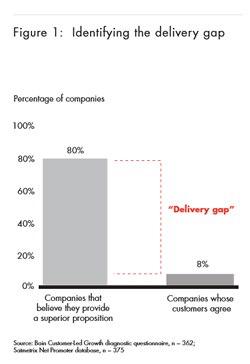
The customer experience gap has always been and remains huge. You can look up hundreds of pieces of research from at least the last decennial and it will always come back.
The percentage of business respondents claiming they offer (or better: enable) “a good customer experience” is dramatically higher that the percentage of customers saying they experience these…experiences as good (or great for that matter).
In “How to achieve true customer-led growth – Closing the delivery gap”, James Allen, Barney Hamilton, Rob Markey and Frederick F. Reichheld (the latter also author of a paper with a significant impact on brand advocacy in 2003), found that 80% of companies believe they provide a superior proposition with only 8% of customers agreeing.
Truth be told: although the percentages from that Bain & Company paper (click for PDF) keep popping up in various pieces and presentations, the paper was written in 2005 and of course does not cover all industries and companies. But still…
Does this mean you can’t have a strategy to improve customer experience? Does it mean you cannot manage customer experiences to a specific degree? Not at all. There is a whole lot you will ALWAYS be able to do in order to ENABLE great customer experiences.
You probably noticed the words ALWAYS and ENABLE are in capitals. Here is why:
- The enablement of great/easy customer experiences is never finished. It stretches much further than, for instance, marketers believe. Other reasons: customer expectations change, customer expectations differ, there will always be bad decisions and none of your employees will ever be perfect. Finally, with each new technology, channel, societal evolution, etc., both customer expectations and the factors defining customer experience will continue to change as well (note that we don’t use the word “evolve”).
- You can and should create the conditions for top customer experience and of course customer service. But you can’t fully control the perceived value of the customer. You can optimize everything you do – and should do it as well, in a prioritized and realistic way – but you will never be able to satisfy everyone. This is where capturing the Voice of the Customer and continuous loops of gathering feedback and data to enhance what you do comes into play, again adding to the ‘always’ aspect.
So, what can you do? How can you put (the) customer experience in the center and should you even care?
A more holistic and connected customer experience approach going beyond marketing and customer service is essential to succeed. But that isn’t enough.
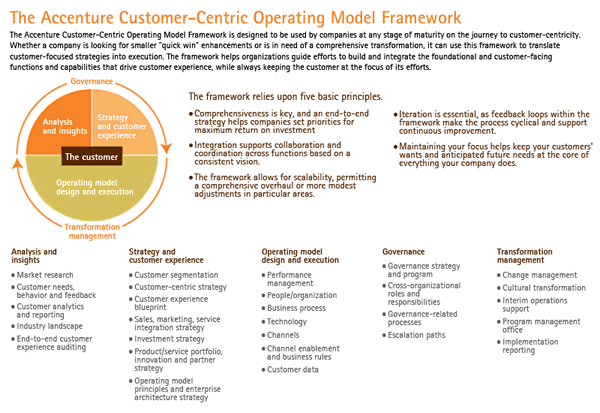
Why and how customer experience matters (more)
Let’s first look at why customer experience matters. We all know the obvious answers as they get repeated time and again:
- Customer expectations have increased,
- People have more channels to voice their opinions,
- Failing to deliver upon customer expectations, makes people change vendors, especially in specific industries
- Etc.
In fact, across every industry we’ve been analyzing lately, customer experience is at the top of the corporate agenda.
Customer experience is contextual
Not all individual experiences have the same impact on everyone: people are different
This doesn’t mean that a few bad experiences by definition are disastrous. There are even numerous examples where customers don’t change vendors, even if they have bad customer experience upon bad customer experience.
This has to do with many factors, ranging from a de facto exclusivity of a company within its niche, the difficulty of switching vendors and the ‘positivity’ of the overall customer experience, to very human factors such as the need for comfort (and thus no change) or even the affinity with a brand.
Furthermore, there are differences – regional, regarding industry, etc. – that make the impact of the customer experience less or more important. It might seem counterintuitive but it’s a fact: some companies suffer far more from poor customer experiences than others.
The other way around, one bad experience can ruin it all as well. Let’s face it: customer loyalty is becoming a bit of a thing of the past.
The customer dictates the what and how
However, in general the importance of the customer experience has grown, as has its impact on the bottom-line of organizations. And the increasing expectation of customers – in general – is far from a fad. Everything needs to be better and faster for Generation Now.
The customer does increasingly dictate what he wants, spoiled by customer experiences offered by best-performing organizations or across industries that have focused on the customer experience early on.
It is essential to strike a proper balance in delivering upon these customer expectations and heightened levels of customer experience requirements for the business and the customers by:
- Connecting the dots and processes by prioritization, better understanding customer and business value (and how both are truly connected far deeper than we believe),
- Optimization in far more processes in a ubiquitous way,
- Not overemphasizing or undervaluing particular business functions and pieces in the overall customer experience equation.
The customer experience requires an integration, or at least alignment of various divisions. This goes for all operations in the business. In practice, however, it proves to be even difficult to align customer-facing divisions and processes. There is a danger that customer experience becomes too much of a marketing issue while the role of customer service divisions, including contact centers, is undervalued. The fact that a large majority of execs see contact centers as a cost center shows another gap in the ways we (don’t) approach the customer experience in a holistic way.
Customer experience, ownership and leadership

No one ‘owns’ the customer experience except the customer.
Yet, customer experience excellence requires leadership, executive prioritization and an enterprise-wide approach, with a clear place for customer experience in the board.
Customer experience and C-suite involvement
There are several reasons for the need to have executive leadership and bring the customer and customer experience in the boardroom.
- Customer experience is key in virtually all customer-facing processes and activities: from customer service and customer retention to loyalty and engagement.
- Research by several companies clearly indicates what most suspect: there is a clear link between customer experience success and CEO leadership involvement.
- Customer experience is the essence of the future growth of the organization as more research clearly indicates. There is a clear link between business performance and C-level customer experience involvement.
- Customer experience and employee engagement go hand in hand. Employee engagement requires leadership as studies have confirmed.
- The change and strategy required to focus on the customer and customer experience can’t happen without C-level direction.
Everyone plays a part in achieving customer experience excellence but some do more than others. A variety of roles has been on the rise over the past few years to make customer focus a reality and customer experience enhancement more than lip service. These responsibilities are shared but there always needs to be leadership.
Read more about this necessity and the research and facts confirming it.
The customer experience and gaps to close to connect customer and business value
We live in a world of gaps and it’s our mission to close these gaps by building bridges in our organizations, with our customers and across the entire ecosystem of our business.
- There are gaps between what we believe customers want and what they actually want.
- Gaps between how we perceive the quality of the customer experiences we enable and how customers perceive the value of them.
- Gaps between the front-end of our businesses and the back-office.
- Gaps between divisions.
- Gaps between brand promises and brand experiences.
- Gaps between the ways we seek business value and the ways we offer and benefit from customer value.
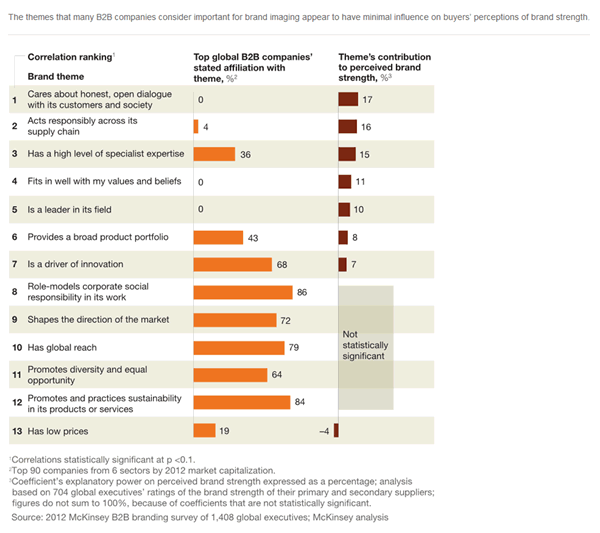
Even if our organizations become more customer-centric and we connect processes, people, information and things, we are far from where we should be. It proves to be hard to be more agile and adapt to an increasingly real-time economy.
It proves to be hard to catch up with the realities of technology and demanding customers, including our employees. And it certainly is hard to prioritize how we can create more business value by offering more customer value.
One of the many reasons contributing to these gaps, to this Swiss cheese full of holes, is the disconnect between several business functions. Another reason is the disconnect between processes and divisions that try to achieve comparable goals, without trusting each other, let alone collaborate. Yet another reason is the fact we often sell the importance of customer experience the wrong way and don’t get the buy-in. A final one is our never-ending urge to control, fear of losing control and overprotection of the silos we create.
It’s about integration and relationships between people through connected processes and working across silos, having a much broader perspective, involving the whole business, customers and ecosystem. Because the customer experience is the task of EVERYONE and RELATIONSHIPS in the end make the difference. Technology simply enables to do it better.
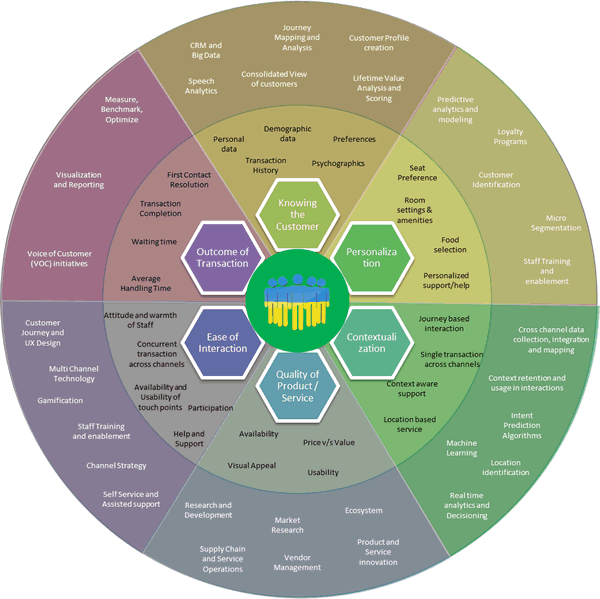
Customer experience and customer journey mapping
With customer journey mapping, you can look at the customer experience and many related customer-oriented processes and plans by putting the customer journey in the middle, most often using personas and focusing on the various stages of the customer life cycle.
Customer journey mapping takes out the guess work in customer experience management and design. A customer journey map is a framework that enables you to have a more precise view at the customer life cycle, looking at the characteristics, goals, emotional triggers, various stages and touchpoints of your customers (although a customer journey map is not the same as a touchpoint map). It’s a non-linear approach as opposed to what we still often see in traditional marketing funnel models.
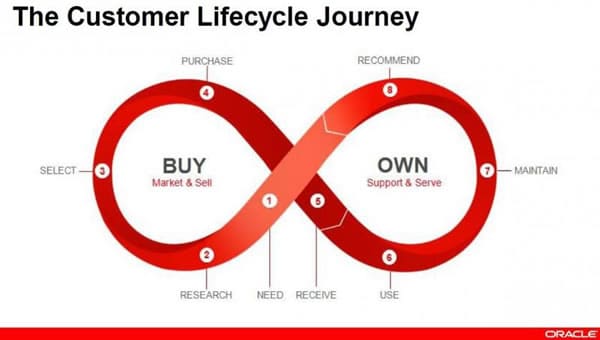
What are customer journey maps and what can you do with them?
Customer journey mapping is usually done using personas. In order to be as accurate and as close to the customer experience as possible, customer journey maps take into account key customer questions across various stages or “moments” in the life cycle in a less staged approach and use a mix of ways to understand the customer journey and map it in some visual way.
Customer journey maps are not static, they are dynamic representations, essentially focus on customer experience optimization. The emotional aspects are virtually always present. Customer journey maps can also be used outside the strict scope of customer experience management. Tip: don’t overcomplicate or get lost in theory or, worse, fiction.
Customer journey mapping: “getting” and involving the customer
Customer journey mapping can only be properly done when taking multiple input, feedback and research sources and methods into account that need to be validated using data, important stakeholders and, last but not least, customers themselves.
As said before: there’s more than digital and dashboards.
Customers are out there and, on top of talking to them and asking for their opinions, they engage every day with your business through numerous frontline workers, for instance in your customer service department.
Optimizing the customer experience: the holistic and integrated must
Customer experience optimization is a holistic task, involving the whole organization and looking at the customer as an individual, not as an email address or a series of – often disjointed – contact moments.
The most direct interactions with and experiences of customers occur in the front end and across customer-facing operations. Think about the help desk (customer service, contact center), sales, face-to-face interactions and even some marketing communications.
Part of the customer experience optimization exercise is to connect the front office and the back office. In practice this is often not the case.
Two examples:
- If a contact center agent doesn’t dispose of the right information to service a customer because crucial data are missing to get a full customer (interaction) view, the disconnect between the back office where information enters and the front end where information enters too but where at the same time direct customer contact occurs, leads to frustration and poor experiences.
- When a customer engages directly with your business by using an online tool, the underlying processes in which the tool plays a role, should be aligned, fast and supportive of the intent the customer had when using it. If this isn’t the case the initial positive experience when using the tool loses all meaning if the processes and systems it is used for are slow.
While the disconnect between the front office and the back office is among the main caused of customer dissatisfaction, there are many – often relatively easy – ways to improve the customer experience. Yet, it takes a deep understanding of what customers truly want instead of assumptions and that also means customer experience metrics and measurement.
Customer experience transformation: getting started
So, improving the customer experience ranks high on the agenda of many organizations and executives. Because it’s important, because competition is getting better at offering great customer experience and because ‘okay’ isn’t enough anymore for numerous reasons, the customer being the main one.
In a video the well-known customer experience thought and practice leaders of Temkin Group summarize the challenges at hand and look at customer experience transformation.
The video mentions Temkin Group’s classic report on The Four Customer Experience Core Competencies and its customer experience transformation workshops but is a good reminder and overview regarding customer experience overall.
Why is customer experience important again?
Let’s summarize some of the reasons customer experience does matter (a lot) again as the video sums them up too and Bruce Temkin has been advocating them since the days he was still at Forrester Research, over a decade ago.
Customer experience – among others – matters because:
- It is key in customer retention: having your customers stick around and be repeat buyers.
- It drives customer loyalty, even if loyalty is harder to achieve than ever. More importantly maybe: it drives to recommendations and referrals or good old word-of-mouth.
- It is an end-to-end and continuous process that is for the long run and drives the future of your business (so it’s not just an ad hoc or service improvement thing).
Culture, processes and 4 customer experience competencies
As we mentioned earlier customer experience is indeed not just a thing, even if sometimes it seems to have become one for some but customer experience is both a reflection of the company culture and its operating processes.
Processes are key in customer experience transformation as a lack of consistent and connected processes (e.g. the back office and the front office) leads not just to customer frustration but also demotivates front line employees who are in touch with your customers. If you want to build sustainable differentiation, as the video shows, it’s crucial to create a customer-centric organization.
Just summarizing those four customer experience core competencies in case you hadn’t heard about them before:
- Purposeful leadership.
- Compelling brand values.
- Employee engagement.
- Customer connectedness.


